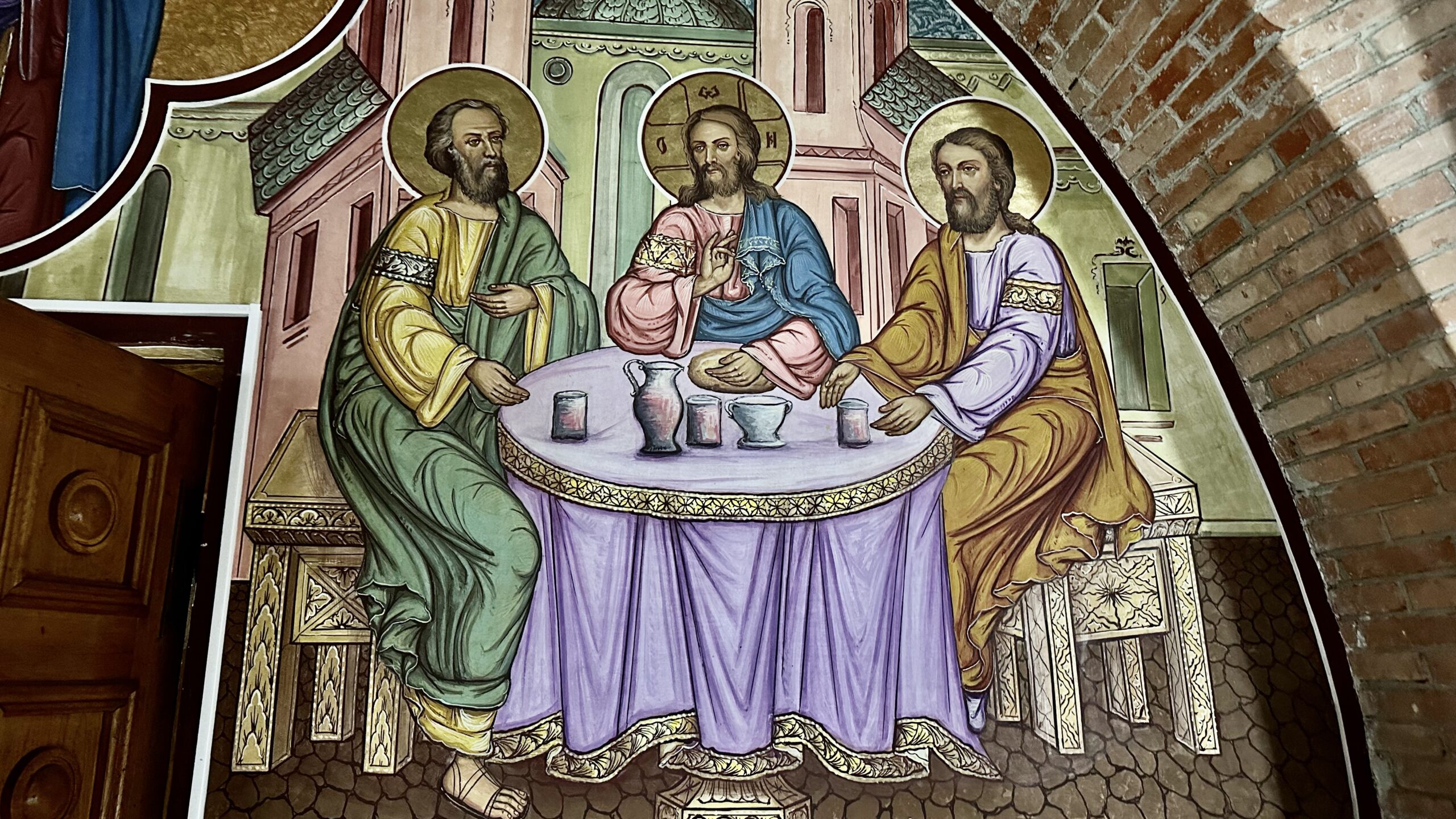The Churches have a rich tradition of peace. They all remind us that peace is not first and foremost a program, something external, but begins within us. A peaceful heart is a peacemaker. During the recent ecumenical meeting of “Synaxe” in Romania, this theme was explored in greater depth.
by Martin Hoegger, www.hoegger.org
Dom Johan Geysens, from the Benedictine monastery of Chevetogne in Belgium, talks about peace of heart in the Christian tradition, with some important spiritual figures. In his “Life of Saint Benedict”, Gregory the Great says that he “dwelt with himself”. That’s why he feared no one.
In his Imitation of Jesus Christ, T. A. Kempis emphasizes inner peace in response to external demands. “It is by resisting the passions and not by giving in to them that we find true inner peace… it is the way of the cross that leads to continual mortification”, he writes. The necessary condition for finding peace is therefore interior conversion: “Leave yourself and you will enjoy great interior peace”!
Among the Spanish mystics, Teresa of Avila warned of the importance of vigilance against intrusive thoughts: “Let nothing trouble you, nor afflict you”. For John of the Cross, peace is not possible in the night of the soul.
Peace is lived in the contradictions of this world, not outside. Thus, Thérèse of Lisieux testifies to an experience of solidarity with sinners, and Thomas Merton with the concerns of modern man. Today, Christians must also work for universal peace, fighting against situations of violence and injustice that affect the poor most of all. They are called to embody God’s peace, this “eschatological gift that calls for our collaboration”.
Romanian witnesses to the peace of Christ
Romanian Metropolitan Serafim reminds us that in Orthodoxy, the Hesychast tradition also emphasizes interiorization. All prayer must be prayer of the heart, not just the so-called “Jesus’ prayer”. Meditation must descend into our hearts through asceticism and prayer. Without them, we cannot acquire peace of heart.
He illustrated his remarks by presenting some of the great Romanian witnesses of monasticism. The Brâncoveanu monastery was revived thanks to Father Arseni Boca, a priest gifted in several arts, particularly painting. He created a spiritual movement with Dumitru Stanilonae, a great Romanian theologian of the 20ᵉ century. Together, they re-translated and enriched the Philocaly, a collection of Church Fathers, adding several Fathers and commenting on them. They published four volumes until the start of the Communist regime in 1948. Both were then thrown into prison. In 1959, 5,000 monks were expelled from the monasteries and more than 2,000 ecclesiastics from different churches were imprisoned.
How can we keep our heart in peace in these circumstances? It’s God’s grace, but it also requires constant attention. Two apparently contradictory maxims form the basis of this spirituality: “all is grace”, and “give your blood to acquire grace”! Asceticism and prayer must be held together.
Arseni Boca had the gift of preaching and clairvoyance. Crowds came to him, and many miracles were attributed to him. He emphasized also the importance of the Christian family. Today, pilgrimages to his tomb never cease.
Serafim Popescu was known for his great kindness and simplicity of heart. Theofil Paraïan, born blind and a disciple of Serafim, was ordained a priest despite his disability. A great confessor and lecturer after the fall of communism, he was invited by all the universities.
Father Cleopa knew the psalter by heart, as well as many of the writings of the Fathers of the Church, which he quoted during his sermons. He spent nine years in prison. Father Yohanikè published hundreds of interviews with monks and nuns containing great wisdom.
After the fall of communism, more than 2,000 new churches were built, as well as more than 100 monasteries. But this extraordinary revival has dried up. Monastic life has less appeal than it did at the end of communism. There are also fewer vocations to the priesthood.
Archbishop Serafim is grateful to God because he has known more than 50 spiritual fathers and mothers and has been marked for life by their company and visits to monasteries.
True and false ecumenism
Bela Visky is a Protestant pastor and professor of theology in Cluj. He belongs to the Hungarian minority, which numbers one million in Romania, and talks to us about the question of how different religious communities live together.
Referring to a commentary by Dietrich Bonhoeffer on the Beatitude of the Peacemakers, he states that the Christian must actively procure peace, not just passively live it. The Christian welcomes others by wishing them peace and prefers to suffer than to cause others to suffer. This is how the various religious communities should relate to each other.
In Transylvania, Protestants have a proud tradition of tolerance. Today, there are two kinds of ecumenism. One is genuine, the other is not. False ecumenism had the blessing of the dictator during communism. It was purely external and a means of propaganda. The current mistrust of some Christians towards ecumenism is rooted in a reaction to this false ecumenism.
True ecumenism is internal and comes from the experience of persecution during communism, where real friendships were made in prisons. For example, Nicolae Steinhardt’s friendship with Lutherans and Greek Catholics. B. Visky recommends reading Nicolae Steinhardt’s “Diary of Bliss”, in which this Jewish convert to Orthodoxy recounts his joy at the presence of Christ in prison with Christians from other Churches.
His generation of pastors is the heir to these two contradictory types of ecumenism. In general, the churches live in parallel, except during the Week of Prayer for Unity. When he asks his students the question: “Is ecumenism optional or is it part of the DNA of the structure of Christian existence”, the answers will vary greatly depending on the student’s convictions.
For other articles on this theme, see: https://www.hoegger.org/article/blessed-are-the-peacemakers/
Picture: The Emmaus meal, from the monastery of Brâncoveanu












